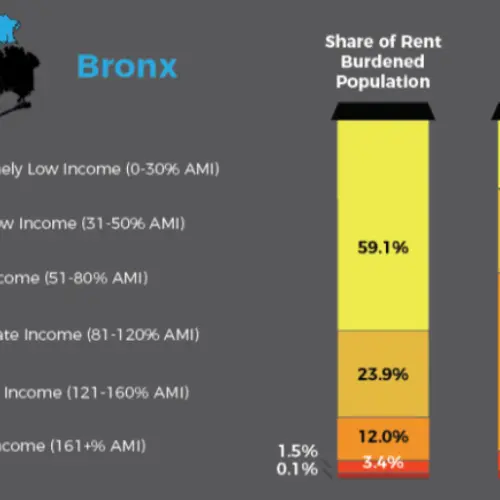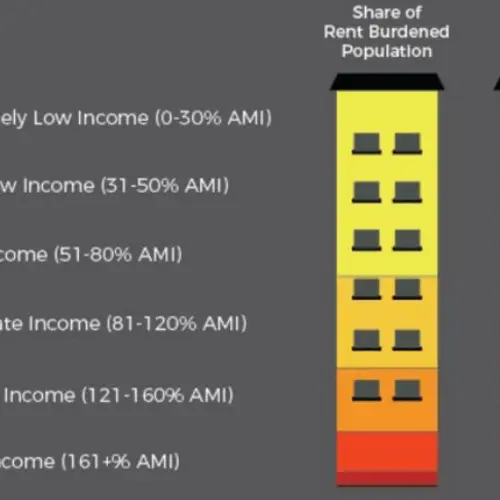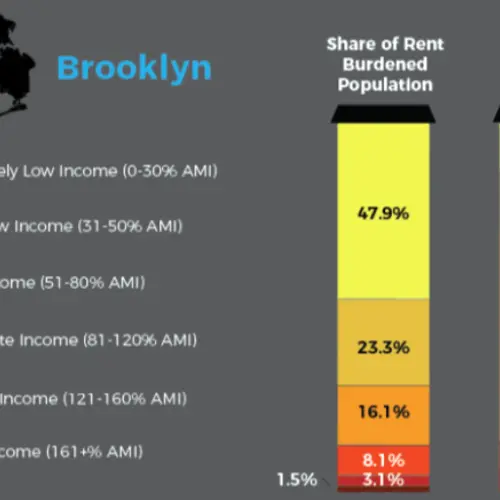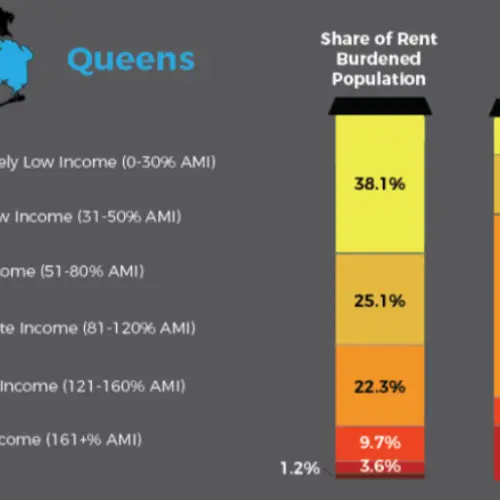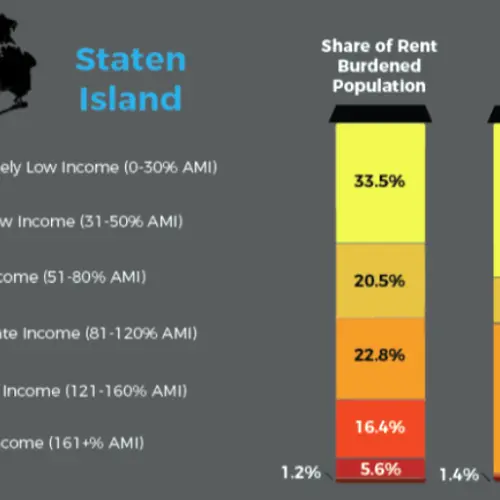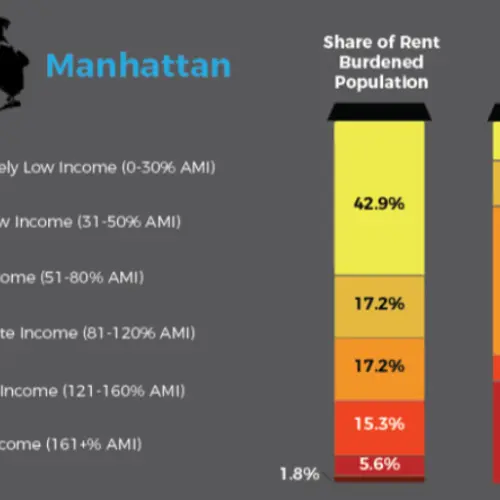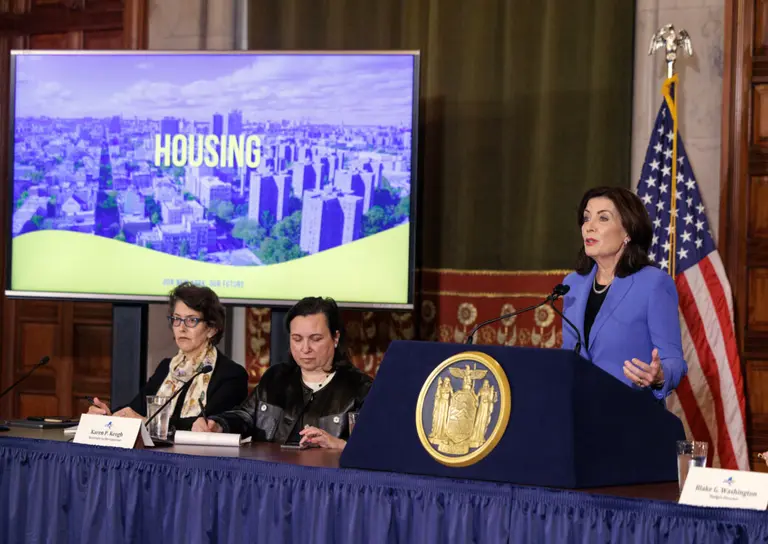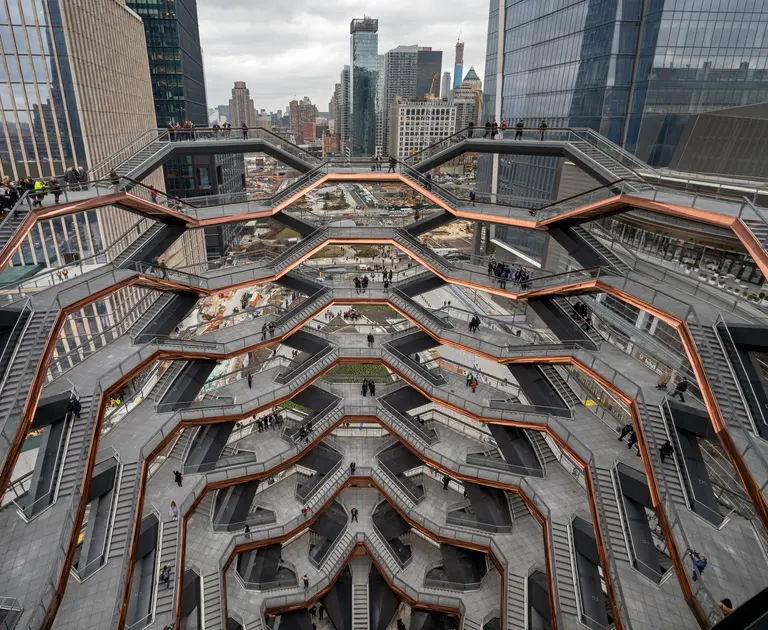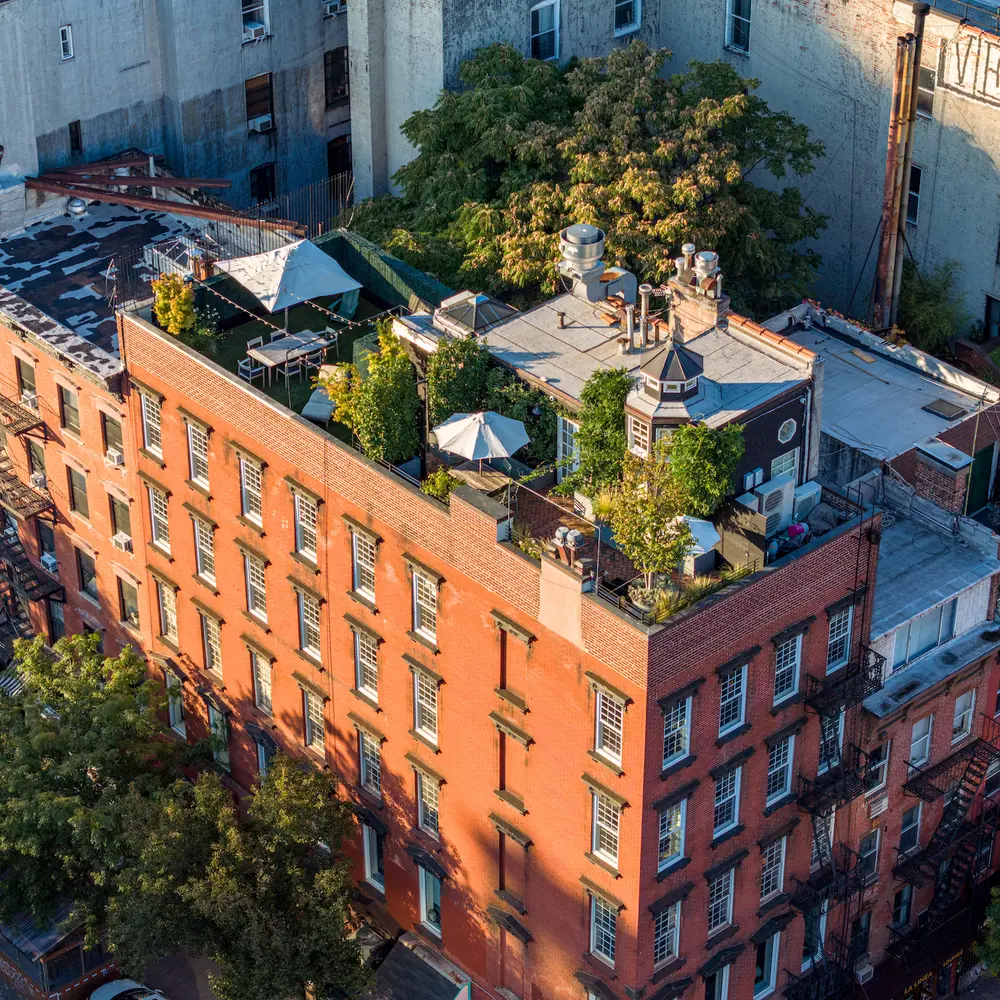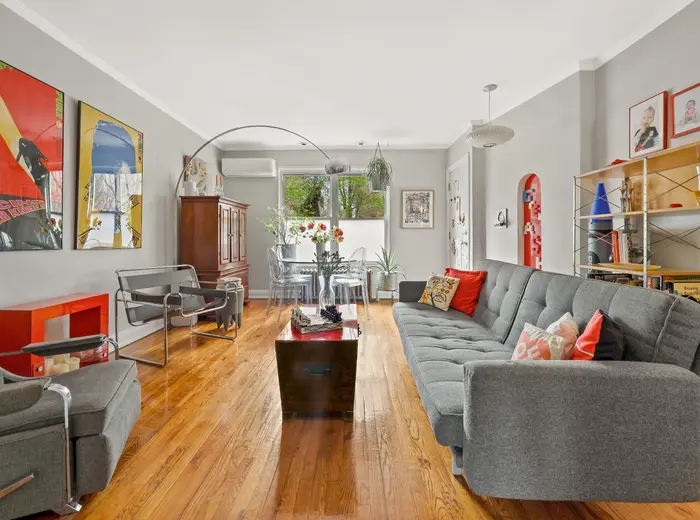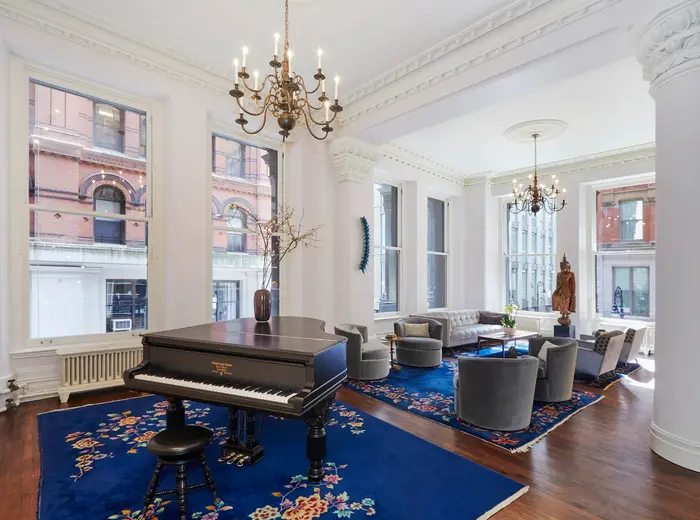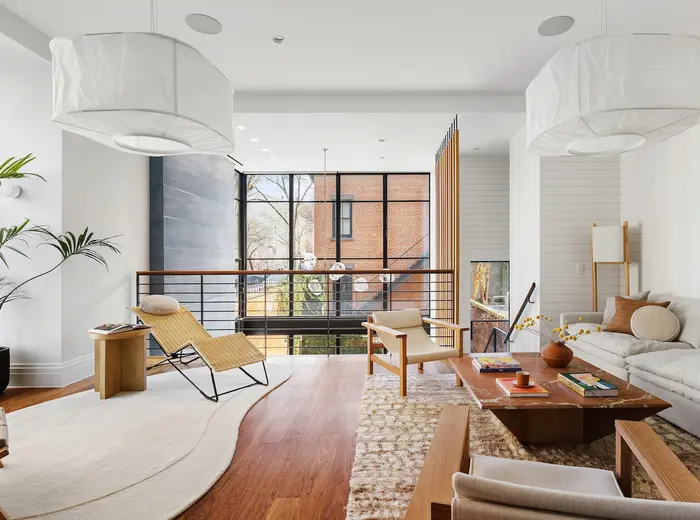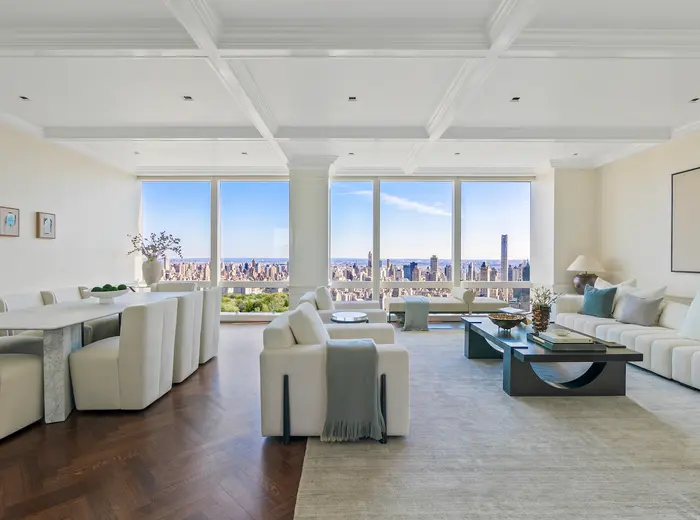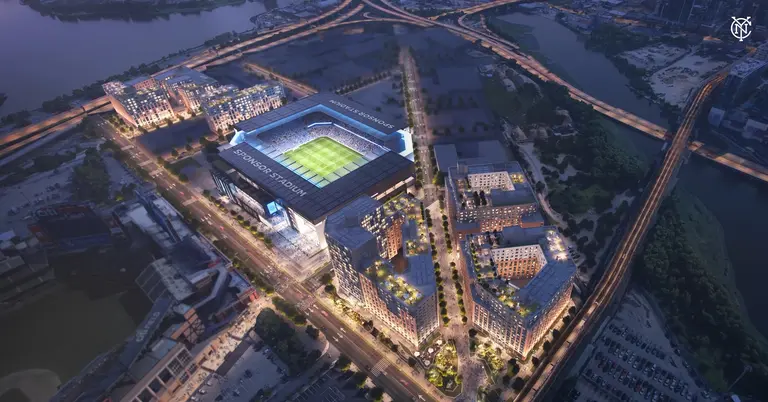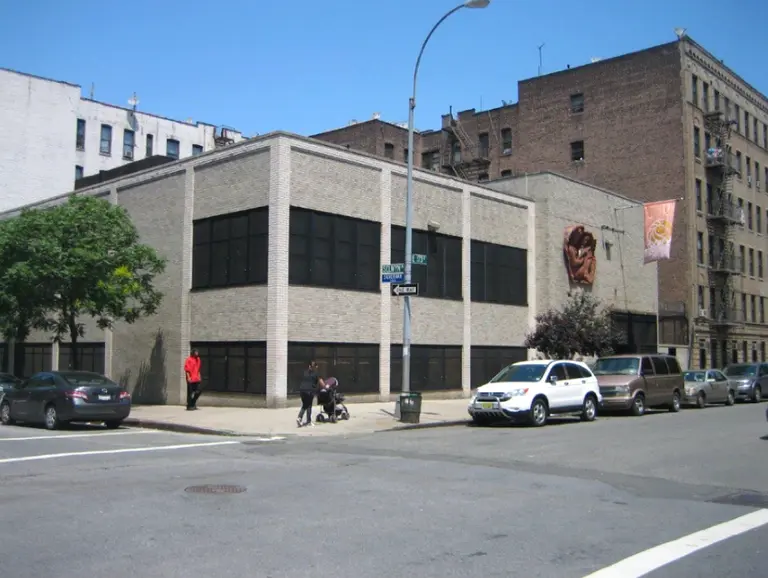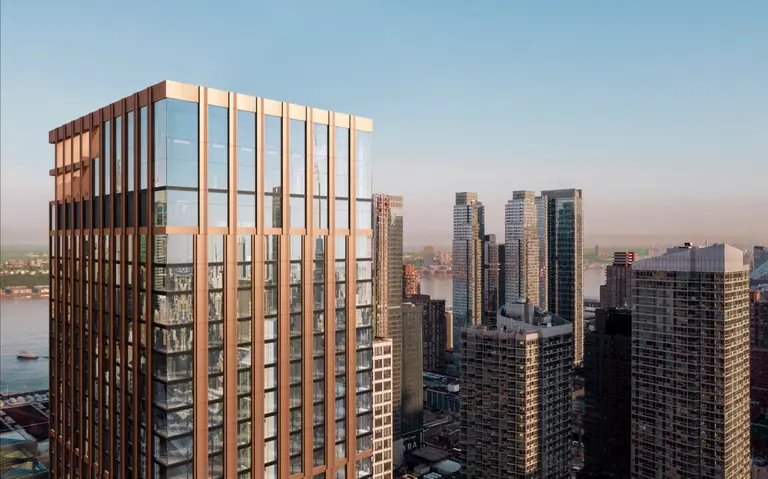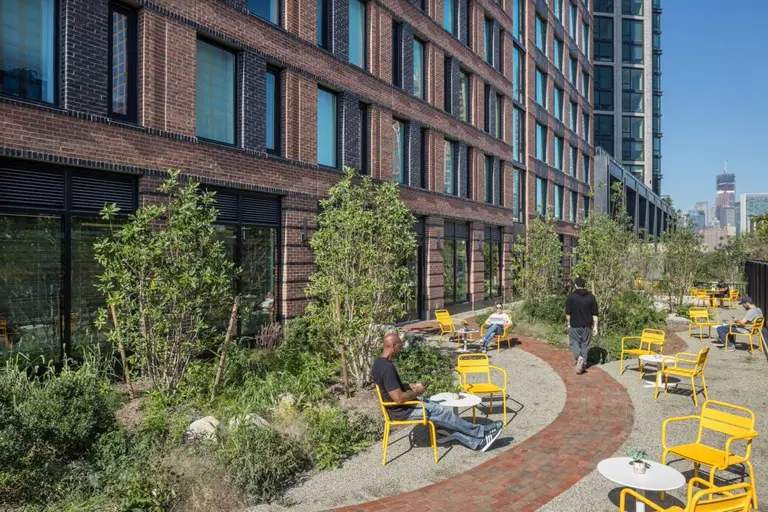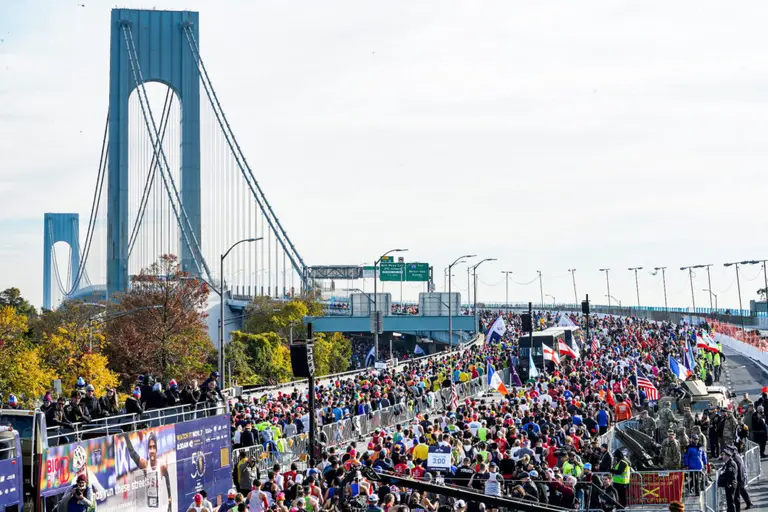Every borough but Staten Island is underserved by city’s affordable housing plan, study says

Photo via Wikimedia
While in July Mayor Bill de Blasio touted his Housing New York initiative for creating the most affordable housing units since 1989, housing advocates are questioning how many of these units actually match the need of the most rent-burdened New Yorkers. According to a new analysis by the Association for Neighborhood and Housing Development (ANHD), city residents with the lowest income continue to be the most under-served by the affordable units created and/or preserved under de Blasio’s plan in every borough except Staten Island. New infographics from ANHD break down the share of each borough’s rent burdened population at each income level in comparison to the percentage of units created by de Blasio’s plan that serves them.
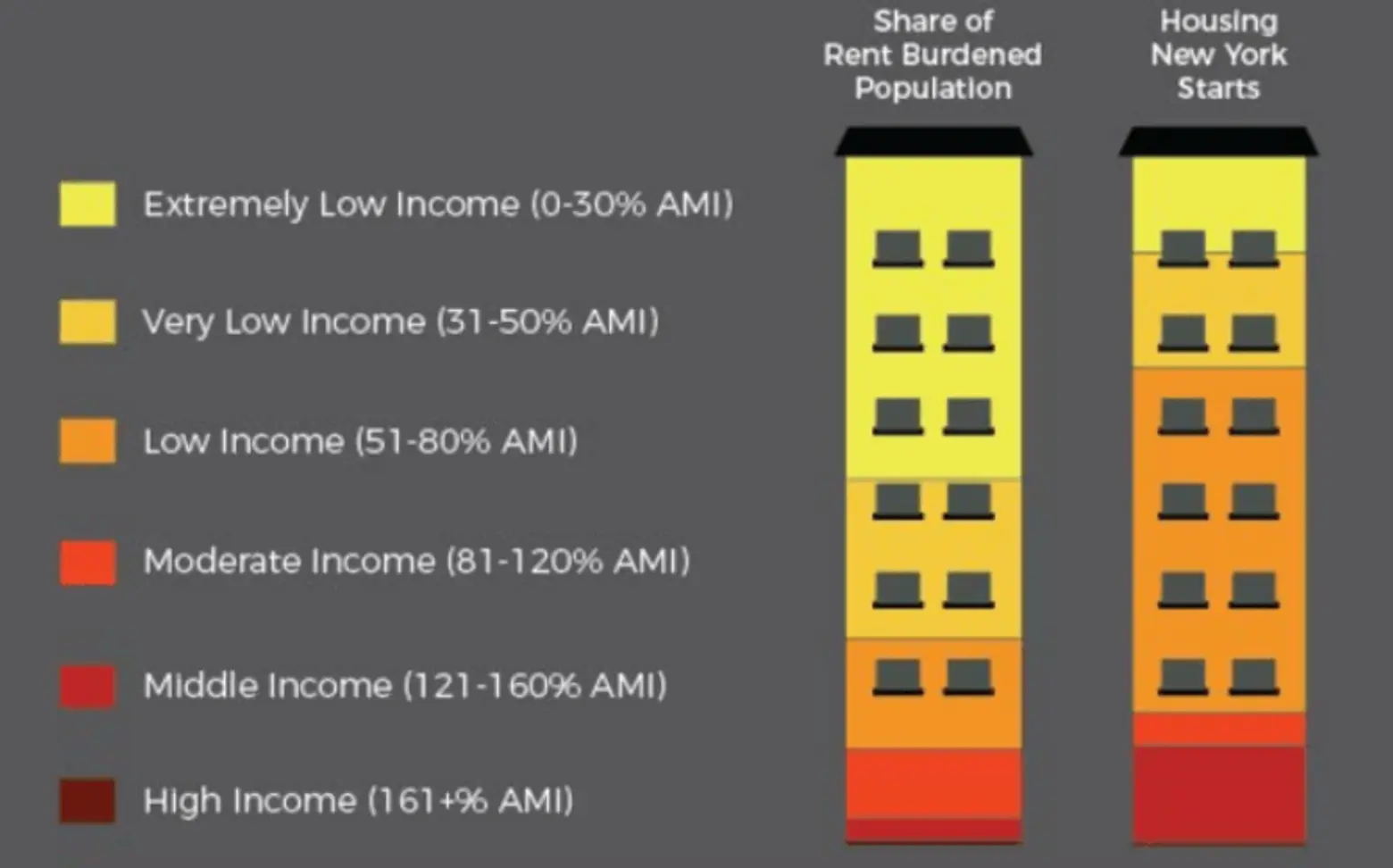
Earlier this month, ANHD released a report that detailed shortcomings of the de Blasio administration’s Housing New York initiative. With rent burden as their lens, the group found that fewer housing units are set aside for those in the extremely low-income bracket than for those making between $52,000 to $69,000 annually. To be considered rent-burdened, residents put more than 30 percent of their income towards rent. In their analysis, ANHD found that “even if the City continues to meet the goals of Housing New York, it is unlikely to meet the goal of reducing the affordability crisis in New York City.”
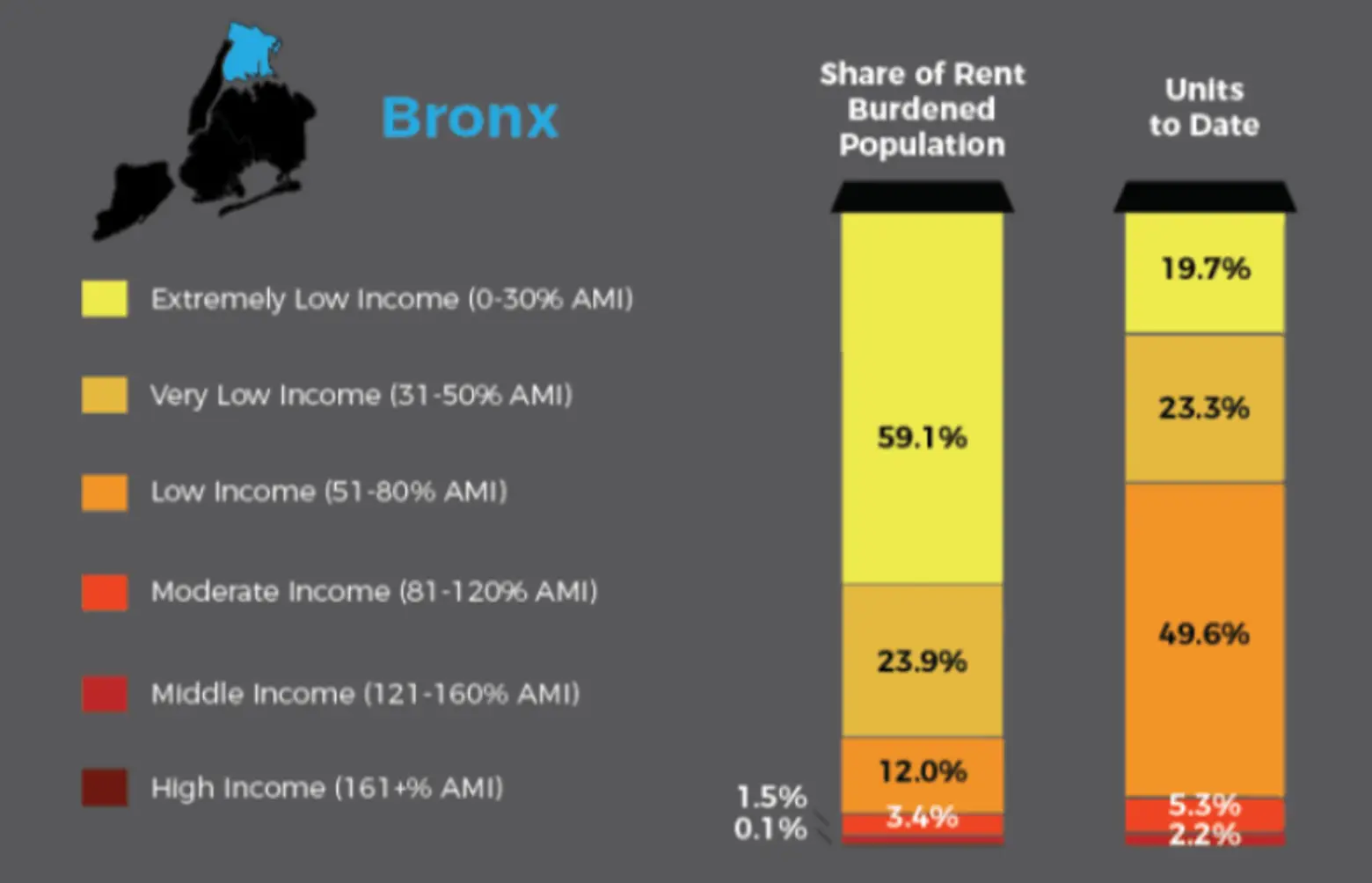
In the Bronx, about 59 percent of the population is considered to be extremely low income, earning roughly 0 percent to 30 percent of the Area Median Income (AMI). Notably, just under 20 percent of units have been created or preserved to date that serves Bronx residents in this income bracket. However, for those earning 51 percent to 80 percent of the AMI in the Bronx, which only makes up about 12 percent of the rent-burdened population, about 50 percent of units have been set aside for those earners.
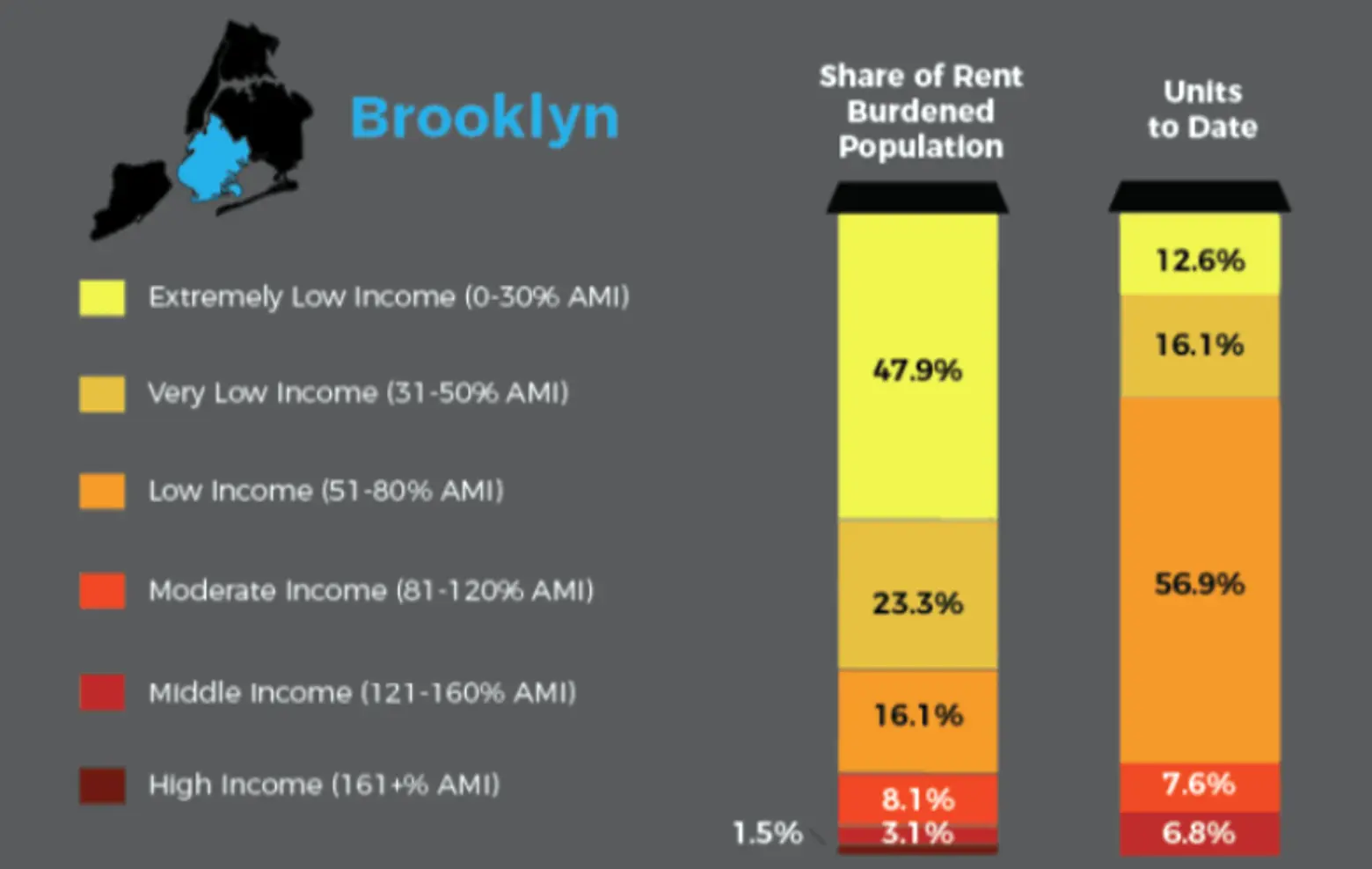
Similarly, in Brooklyn, there appears to be a disconnect between the needs of rent burdened residents and the type of affordable units available. According to ANHD, about 47.9 percent of the borough’s rent-burdened population fall into the extremely low-income bracket. Less than 13 percent of units created so far have been for those residents. Almost 57 percent of units created or preserved in Brooklyn to date are for residents earning an AMI between 51 percent and 80 percent.
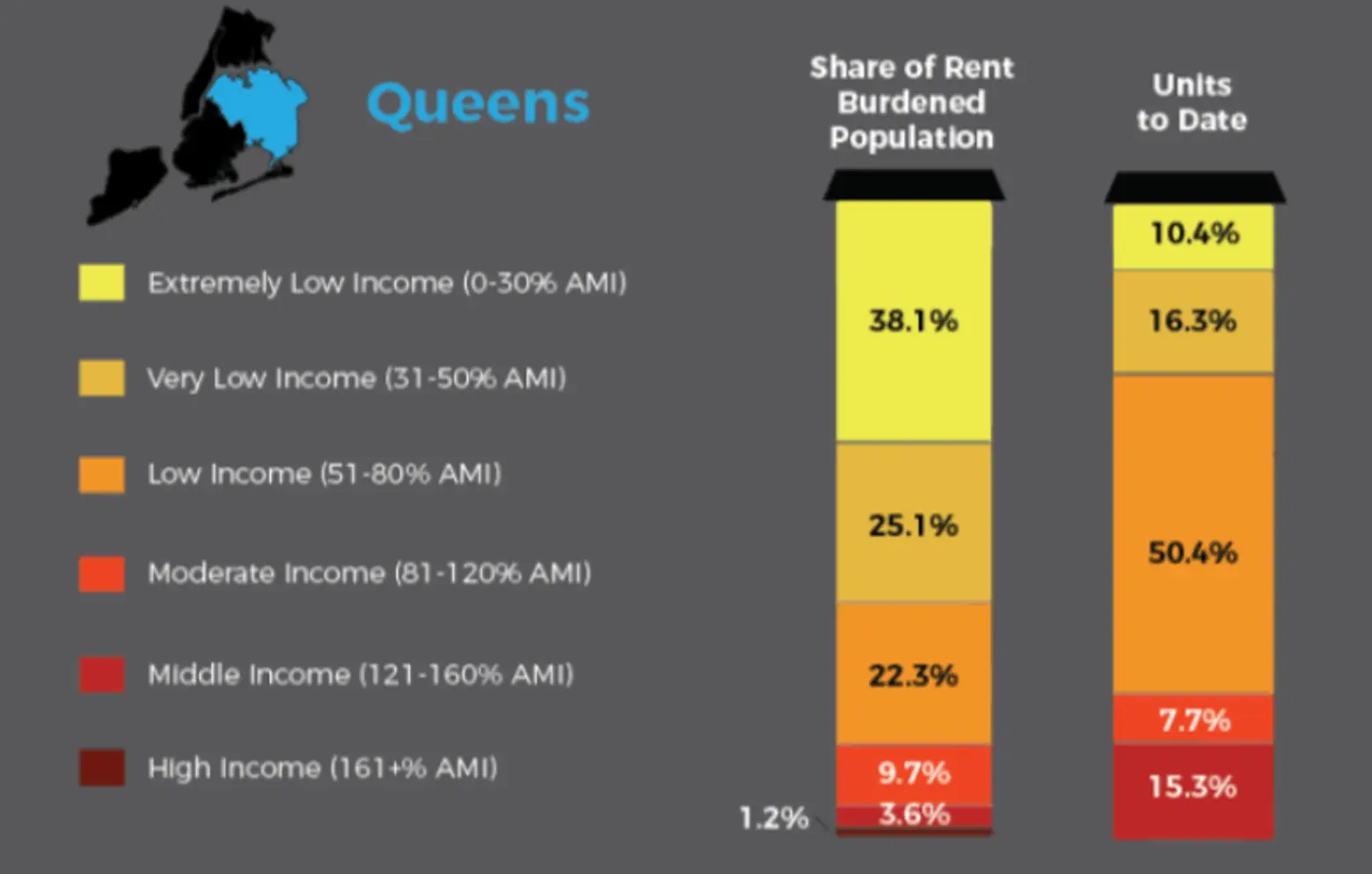
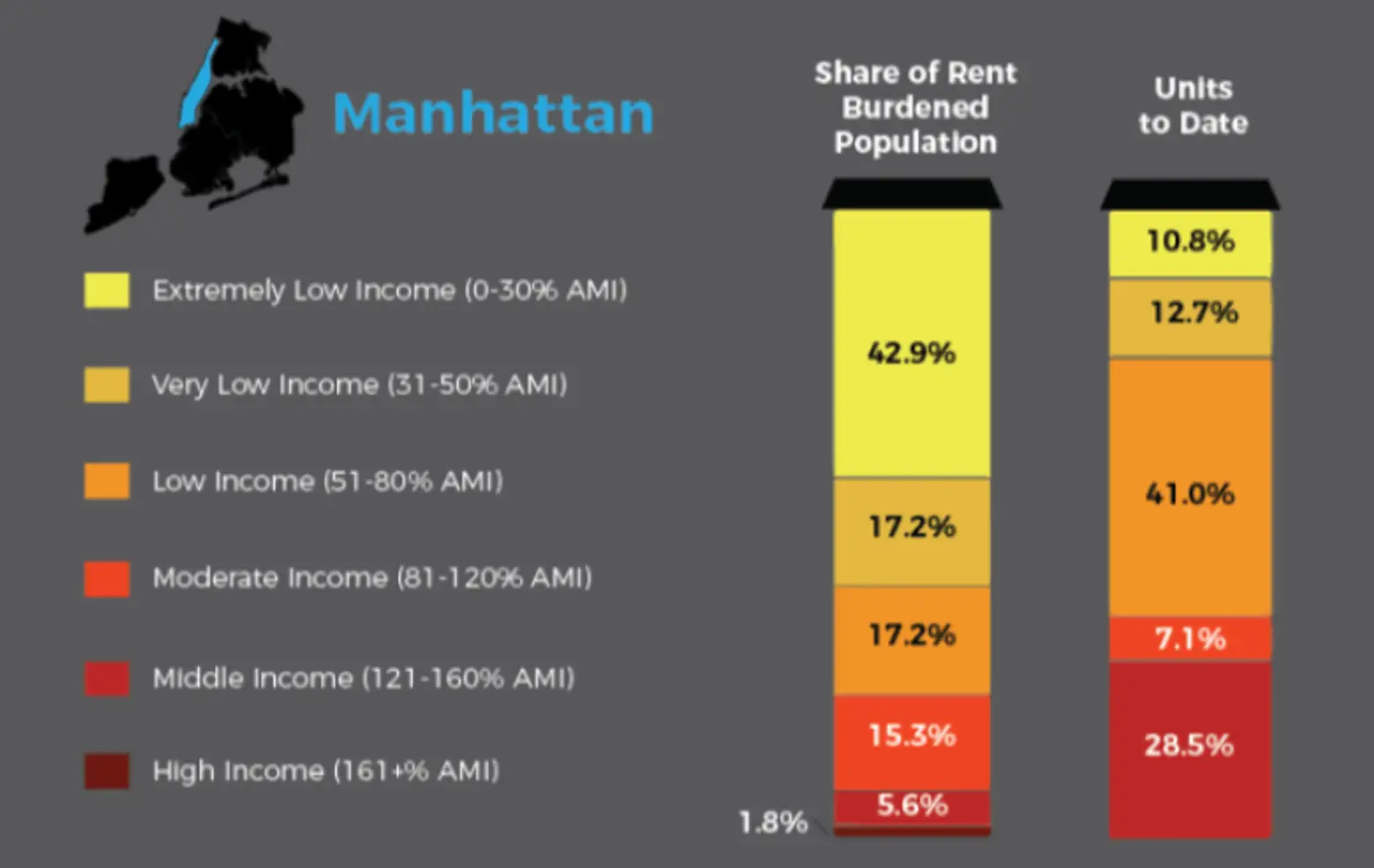
In the boroughs of Queens and Manhattan, the percentage of units designated for extremely low residents hovers around 10 percent. Interestingly, both of these boroughs have set aside the more affordable units for high-income New Yorkers, or those earning 160 percent of the AMI, than the other boroughs. In Manhattan, a whopping 28.5 percent of units to date have been for residents who fall under the high-income bracket.
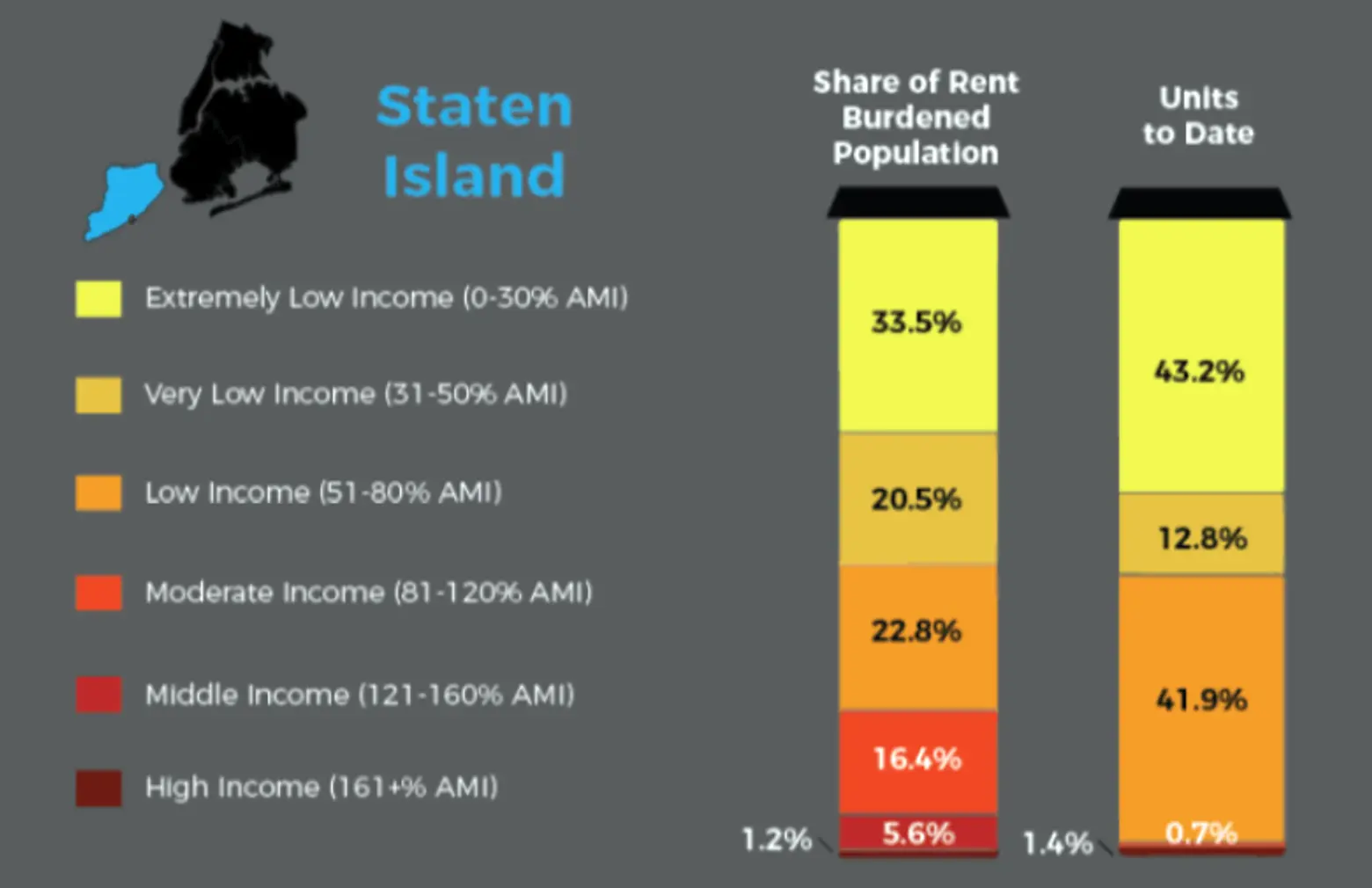
Currently, Staten Island came out as the only borough that matches the needs of rent-burdened residents to the number of affordable housing units created.
To measure success accurately, ANHD suggests the city look at addressing affordability for low-income New Yorkers in general, instead of just attempting to meet the plan’s goal for 200,000 affordable units in 10 years. The analysis says, “It’s time to rethink not just one particular program, but overall strategies and priorities starting from a baseline not of numbers of units, but of meeting New Yorkers’ needs.”
RELATED:
- Study says Mayor de Blasio’s affordable housing plan ignores low-income New Yorkers
- The city added 24,293 affordable housing units this fiscal year, the most since 1989
- Affordable housing lotteries fail low-income residents and favor middle-income earners, says new report
All infographics courtesy of ANHD
